Throughout this whole pandemic, I’ve entertained myself by completing languishing paint projects or coming up with solo options for some of my favorite games. While solo games can create a rewarding experience, the real reason I game is for the social aspects so gaming without that can only sustain me for so long. After a bit of thought and prep, I decided to try something new: Remote Frostgrave.
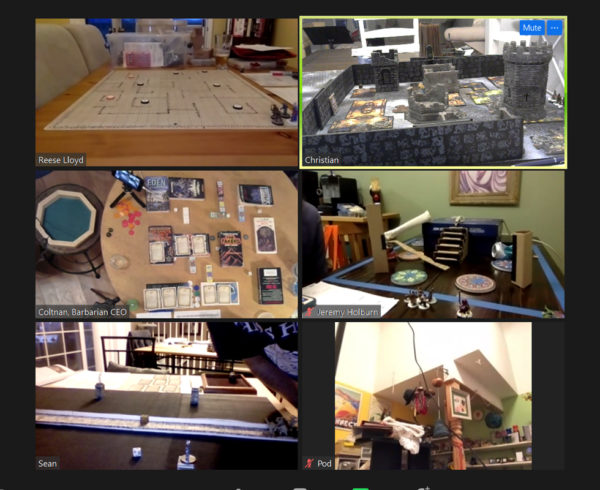
I’ve had semi-weekly Zoom chats with my regular game group and we’ve messed around with some virtual gaming sessions by continuing on with our D&D campaign but most of the time we just chat or work on some hobby projects as we hang out.
I started thinking of the solo options for Frostgrave that I’ve done with Colton and hit upon a story hook that may let us all play a game of Frostgrave together as a shared experience. I’ve seen some options where one player hosts the game in its entirety and everyone else remotes in and directs their play instructions using various webcams to get all the angles.
That sounds like a lot of work for the host and a lackluster experience for the players, not to mention agonizingly long for a game with 3+ players. I think I could see it working for maybe 2 players but it doesn’t seem worth the effort for more than that.
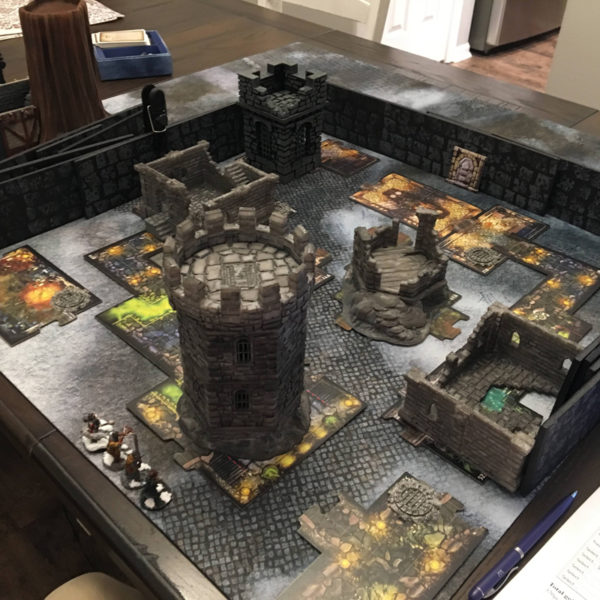
Instead, I wanted a shared world where each player is given a random room their Frostgrave force is stuck in. Separated from their potential rivals, we Wizard bands (or what is left of them) must co-operate in order to survive our individual ordeals.
The game would be setup initially as any Frostgrave solo game would: limited forces, smaller map, specific end goals that you find in the Dark Alchemy and Perilous Dark supplements. The experience could end their but then we really aren’t playing “together,” we’re just doing our own thing which is like any of our other weekly chats.
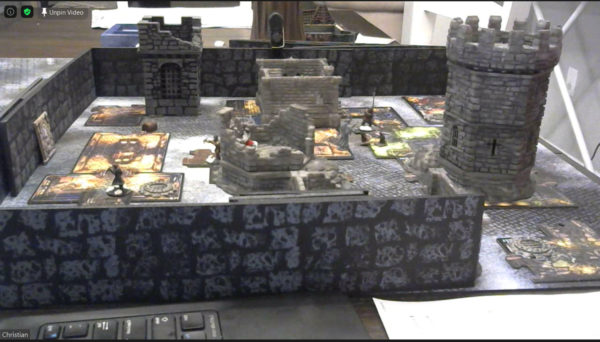
To create interactions, each “room” has triggers (usually when bad things happen to your warband) and those triggers set off bad events in another player’s room. The events are tailored to each room and allow for a more shared experience across the group.
In addition, each room had the equivalent of a Wizard’s Eye spell that looked into your room from the ceiling and could see all of your board. Each wizard is connected to each room except their own this way and could assist (this is a co-op game) by channeling spells through these Eyes.
With these rules in place, I gave everyone their random room setup instructions and specific rules and let them make their boards as complicated or simple as they had the time and resources for. We had about two weeks and that isn’t a lot of time for people to go all out but it was nice to see how the players approached the room layouts.

Jeremy’s room, The Room Of A Thousand Cages took a 3D approach with normal houshold items. I particularly like the large central staircase (coming soon to Kickstarter I hear).
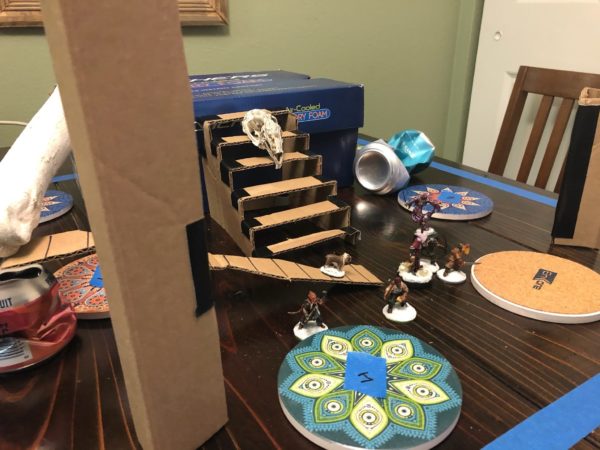
The initial image was what I pulled from our Zoom chat but Jeremy was able to send an “action” shot to me during the game (a practice I should have encouraged more of). Using a gross and real prairie dog skull added to his menagerie of misfit terrain.
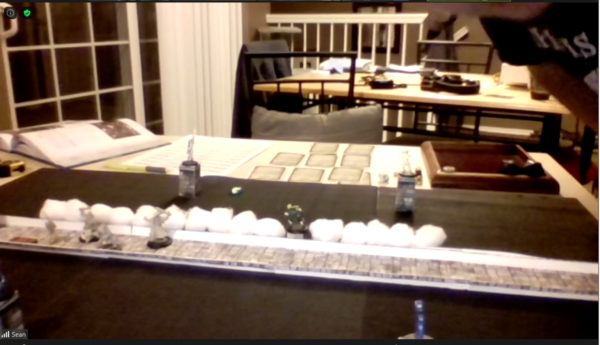
Sean’s room, The Lonely Bridge of Dreams worked with some quick paper craft items and cotton ball spell effects.
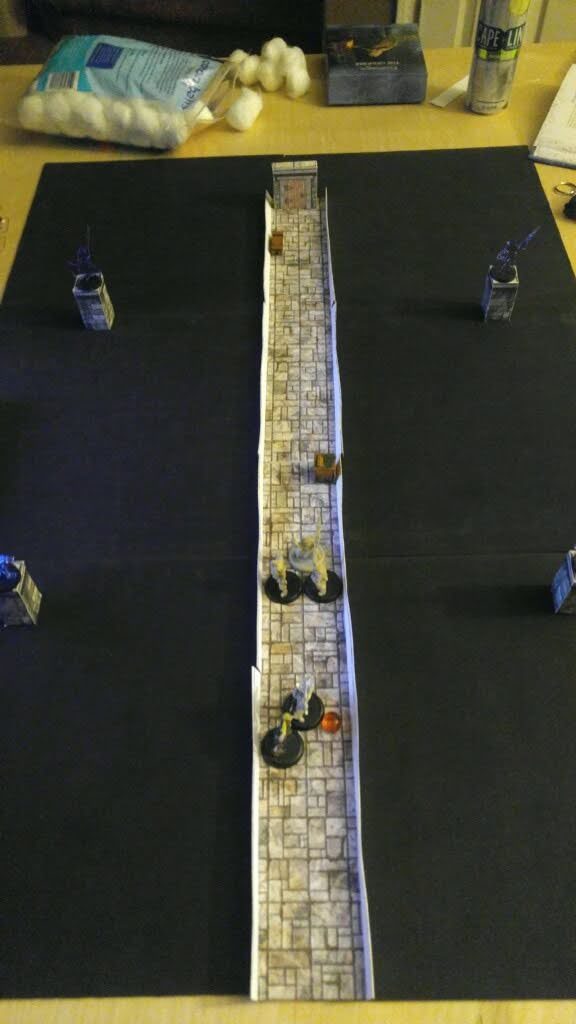
Sean also sent some photos in which help show off just what his band was trying to do. A long exposed bridge with evil wraiths firing random spell effects to slow or kill off his wayward band.
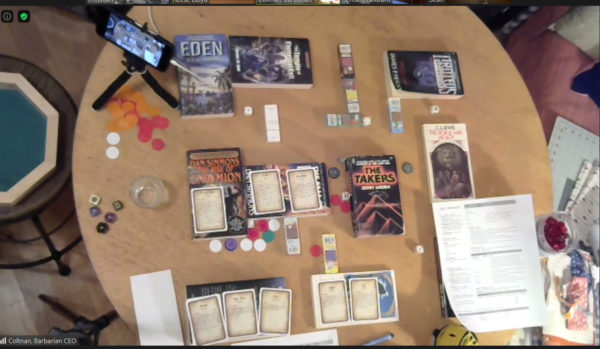
Colton and Reese both had to come up with mazes for their rooms. Here you have Colton’s Maze Of The Forbidden Army. An eclectic collection of books sets off a room full of twisting corridors.
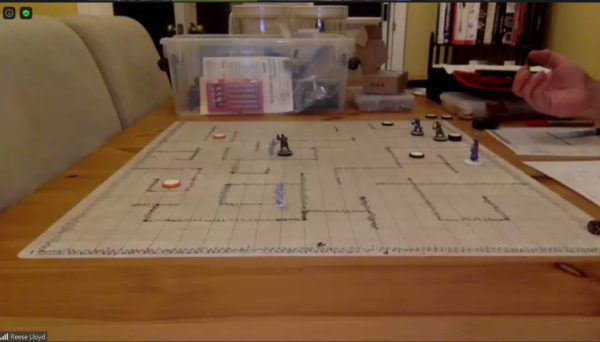
Reese, our resident DM created his Labyrinth Of Cloudy Sorrows using a dry erase grid board. This worked well to the rules he was dealt as all the walls were insubstantial and would grow as the game moved on.
The game worked out well, especially given I didn’t test any of the challenges for the rooms. Everyone was eventually able to make it out. It sounds like people were excited to see more so we’ll work up some more challenges and we already have new ideas on increasing the interaction. It wasn’t the same as playing in person but it was also more engaging and fun then trying scenarios solo.
